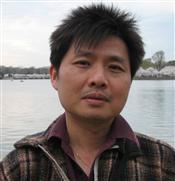Program Information
Feasiblity of Using CT Scout Images for 2D LDR Brachytherpay Planning
J Ha1*(1), R Weaver1 , (1) LAC+USC Medical Center, Los Angeles, CA, M. Mariscal (2), Varian, Charlottesville, VA
Presentations
SU-E-T-431 (Sunday, July 12, 2015) 3:00 PM - 6:00 PM Room: Exhibit Hall
Purpose:: i) To show the feasibility of using CT scout images for 2D low-dose rate brachytherapy planning with BrachyVision (version 10.4); ii) to show their advantages and disadvantages over DRRs.
Methods:A phantom was constructed to house a Fletcher-Suite applicator. The phantom is made of Styrofoam with metal BBs positioned at well-defined separations. These markers are used to assess the image distortion in the scout images. Unlike DRRs, scout images are distorted only in the direction normal to the couch direction; therefore, they needed to be scaled unidirectionally prior to importing into BrachyVision. In addition to confirming the scaling is performed correctly by measuring distances between well-positioned BB, we also compare a LDR plan using scout images to a 3D CT-based plan.
Results:There is no distortion of the image along the couch direction due to the collimation of the CT scanner. The distortion in the transverse plane can be corrected by multiplying by the ratio of distances between source-to-isocenter and source-to-detector. The results show the distance separations between BBs as measured in scout images and by a caliber are within a few millimeters. Dosimetrically, the difference between the dose rates to points A and B based on scout images and on 3D CT are less than a few percents. The accuracy can be improved by correcting for the distortion on the transverse plane.
Conclusion:It is possible to use CT scout images for 2D planning in BrachyVision. This is an advantage because scout images have no metal artifacts often present in CT images or DRRs. Another advantage is the lack of distortion in the couch direction. One major disadvantage is that the image distortion due to beam divergence can be large. This is due to the inherent short distance between source-to-isocenter and source-to-detector on a CT scanner.
Contact Email:


